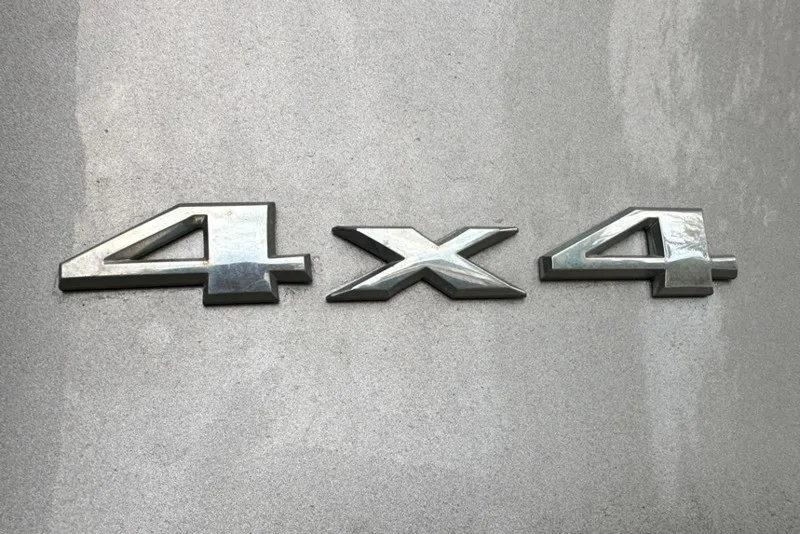All-Wheel Drive (AWD) vs. Four-Wheel Drive (4WD): How They Affect Brake Rotors and Pads
October 01, 2023 The debate between All-Wheel Drive (AWD) and Four-Wheel Drive (4WD) has been ongoing for decades, with proponents of each system extolling its virtues. While the primary purpose of AWD and 4WD is to enhance traction and control in adverse driving conditions, such as snow, mud, or uneven terrain, their impact on brake rotors and pads is often overlooked. In this article, we'll delve into the differences between AWD and 4WD and explore how these systems can affect brake components.
The debate between All-Wheel Drive (AWD) and Four-Wheel Drive (4WD) has been ongoing for decades, with proponents of each system extolling its virtues. While the primary purpose of AWD and 4WD is to enhance traction and control in adverse driving conditions, such as snow, mud, or uneven terrain, their impact on brake rotors and pads is often overlooked. In this article, we'll delve into the differences between AWD and 4WD and explore how these systems can affect brake components.
AWD vs. 4WD: Key Differences
Before we examine the impact on brakes, it's crucial to understand the fundamental distinctions between AWD and 4WD systems:
- Power Distribution:
- AWD: An AWD system continuously sends power to all four wheels, and it can vary the amount of power delivered to each wheel based on traction conditions. AWD systems are typically found in cars, crossovers, and some SUVs.
- 4WD: A 4WD system, on the other hand, is usually found in trucks and off-road vehicles. It allows the driver to manually select between two-wheel drive (usually rear-wheel drive) and four-wheel drive. In four-wheel drive mode, power is distributed evenly to all four wheels, providing maximum traction.
- Usage:
- AWD: AWD is designed for on-road use and is excellent for improving traction in wet or slippery conditions. It's ideal for daily driving and offers a balance between fuel efficiency and traction.
- 4WD: 4WD is primarily intended for off-road and rugged terrain use. It's used when extra traction and torque are needed, such as when traversing rocky trails or deep mud.
- Brake Systems:
- AWD: AWD vehicles typically have standard brake systems, similar to those in two-wheel drive vehicles. However, the all-wheel drive system can have some subtle effects on braking, which we'll explore in the next section.
- 4WD: 4WD vehicles also have standard brake systems for on-road use, but their heavy-duty nature is better suited for off-road applications.
Effect on Brake Rotors and Pads:
Both AWD and 4WD vehicles rely on traditional disc brake systems for stopping power. However, the way they distribute power and the driving conditions they encounter can influence brake wear and performance:
- AWD:
- Balanced Brake Wear: AWD systems distribute power to all four wheels, which can result in more balanced brake wear. This means that all four brake rotors and pads are likely to wear down at a relatively consistent rate, extending the lifespan of your braking components.
- Braking Performance: AWD systems are designed for on-road use and are optimized for regular driving conditions. This means that the braking performance in AWD vehicles is generally well-suited to everyday driving, but not necessarily for extreme off-road or heavy towing situations.
- 4WD:
- Uneven Brake Wear: In 4WD vehicles, when you engage four-wheel drive mode, power is evenly distributed to all four wheels. However, when you switch back to two-wheel drive for on-road use, the front brakes bear the brunt of the braking force. This can lead to uneven brake wear, with the front brakes wearing down faster than the rear brakes.
- Heavy-Duty Braking: 4WD vehicles are often used in demanding off-road conditions or for towing heavy loads. As a result, they may have larger and more robust brake components to handle the increased stress. These components can provide superior stopping power but may wear down faster due to the added workload.
Maintenance Considerations:
Regardless of whether you drive an AWD or 4WD vehicle, regular brake maintenance is essential to ensure safety and prolong the life of your brake components. Here are some maintenance tips:
- Brake Pad Inspection: Regularly inspect your brake pads for wear. Replace them when they reach the manufacturer's recommended thickness to prevent damage to the rotors.
- Rotor Inspection: Check your brake rotors for signs of warping or uneven wear. If you feel vibrations or experience pulsation when braking, it may indicate rotor issues.
- Fluid and System Checks: Ensure your brake fluid is at the proper level and replace it as recommended in your vehicle's manual. Additionally, have your brake system inspected periodically for leaks or other issues.
- Driving Habits: Adjust your driving habits to minimize harsh braking, which can accelerate brake wear. Use engine braking when possible and allow plenty of following distance to reduce the need for sudden stops.
In conclusion, while both AWD and 4WD vehicles rely on standard brake systems, the way power is distributed and the conditions they encounter can impact brake wear and performance. Regular maintenance and attentive driving habits are key to ensuring the longevity and effectiveness of your brake rotors and pads, regardless of your vehicle's drivetrain configuration.


